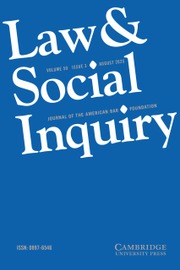No CrossRef data available.
Article contents
Preference or Penalty? The Law and Employers’ Diverging Hiring Intentions of Latino Immigrants
Published online by Cambridge University Press: 10 April 2025
Abstract
There is conflicting evidence as to whether employers prefer immigrants over native-born workers when hiring. Some evidence suggests that employers might penalize immigrants over comparably educated co-ethnic native-born workers. Yet other evidence suggests just the opposite: employers prefer immigrants over native-born workers because of associations with compliance or exploitability. However, many of these studies generate data from workers, not employers, which makes it hard to understand employers’ underlying motivations when hiring. In addition, very few studies consider employers’ occupational roles and variations in organizational contexts. Drawing on original employer-level data—including an original survey experiment of 1,515 employers and interviews with 47 employers and immigration lawyers—I find that there’s tension in the legal awareness and professional interests of employers by their occupational role. Organizational and team leaders are motivated to hire whom they perceive as “exceptional” immigrants to make themselves and their companies look good, while HR staff are motivated to follow legal procedures and avoid regulatory fines. This article has contributions to studies on immigration, the law and society, and organizational sociology. For instance, it finds that in the case of immigration, employers’ occupational roles inside of firms help to mediate the influence of the law on immigrant inequality.
- Type
- Articles
- Information
- Copyright
- © The Author(s), 2025. Published by Cambridge University Press on behalf of American Bar Foundation


